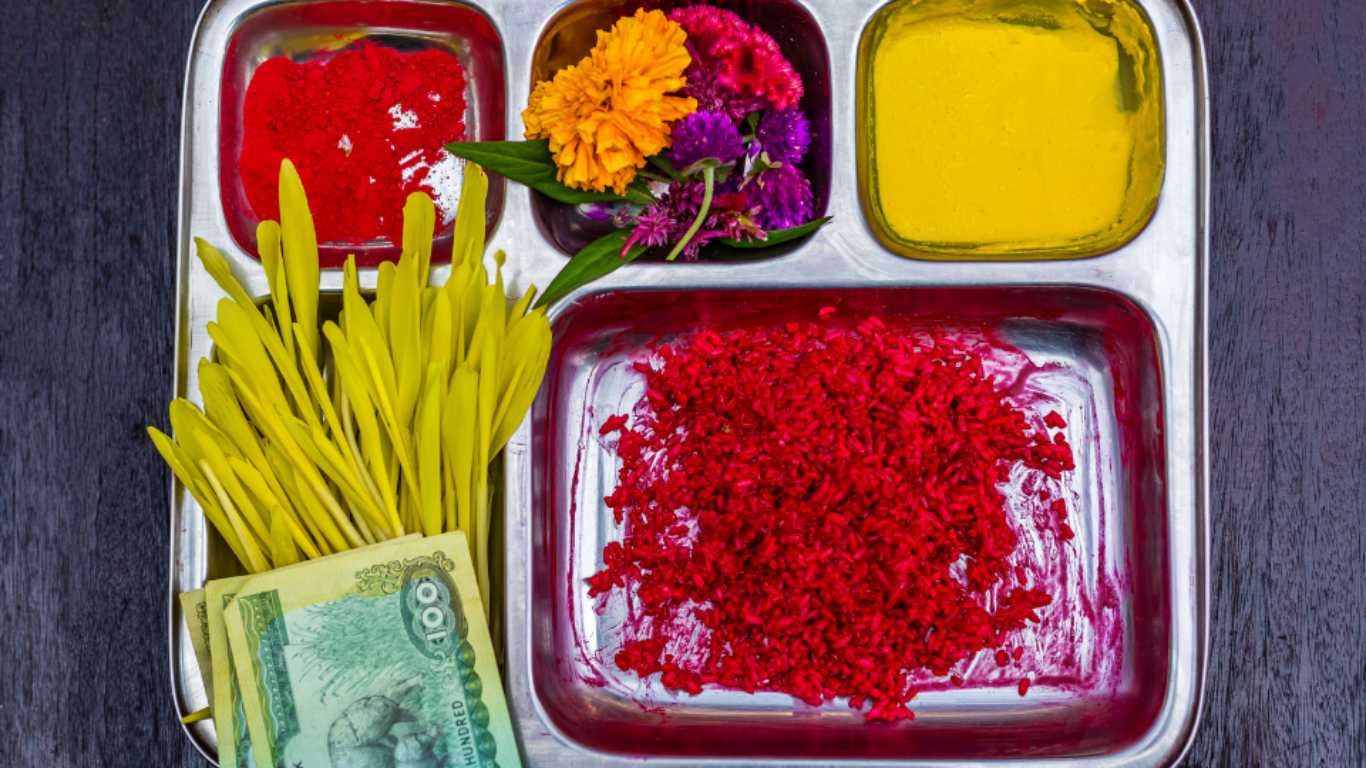
Dashain, the most significant and widely observed festival in Nepal, Let’s dive into “Celebration Dashain in Nepal: A Festival of Family, Tradition and Triumph” represents a special occasion for families to come together and uphold customs, rejoice with happiness, and strengthen their connections. Extending over 15 days, Dashain is deeply ingrained in Nepal’s cultural and religious traditions, symbolizing the prevalence of good over evil. For those eager to immerse themselves in Nepal’s vibrant culture, Dashain provides a distinctive insight into the country’s heritage. In this blog post, we will delve into how Nepalis commemorate Dashain, from the tika and jamara ceremonies to traditional banquets and activities such as swinging on bamboo swings. This guide aims to provide a comprehensive understanding and appreciation of this significant festival, especially for individuals planning a visit to Nepal during this time.
What is Dashain "Celebration Dashain in Nepal: A Festival of Family, Tradition and Triumph"
Dashain or Bijaya Dashami is the longest and most awaited Hindu festival of Nepal. It commemorates the victory of Goddess Durga over the demon Mahishasura, which symbolizes the ultimate triumph of good over evil. Though it originates from a Hindu background, Dashain is a national celebration where people from all walks of life join in.
It is also a festival of paying respect to familial relations. Nepalis living abroad return home during Dashain to be with their families and to seek blessings from the elders in the family. Each of the 15 days carries its importance while the last five days are the most important. These are Ghatasthapana or beginning of Dashain, Fulpati, Maha Astami, Maha Navami, and on the very day of Tika and jamara exchange, the Vijaya Dashami.
Celebrate Dashain in Nepal: Religious and Cultural Significanc
Dashain not only celebrates goddess Durga but also depicts Nepali values of family, tradition, and community. The rituals carried out during Dashain, especially tika and jamara, relate the younger generation to the older, binding respect, unity, and family values. In rural areas, temples and homes are alive with prayers, sacrifices, and gatherings; cities like Kathmandu also join in the public celebration of Dashain. By the end of this festival, the Nepalese people’s hearts are filled with a sense of renewed hope, prosperity, and goodwill.
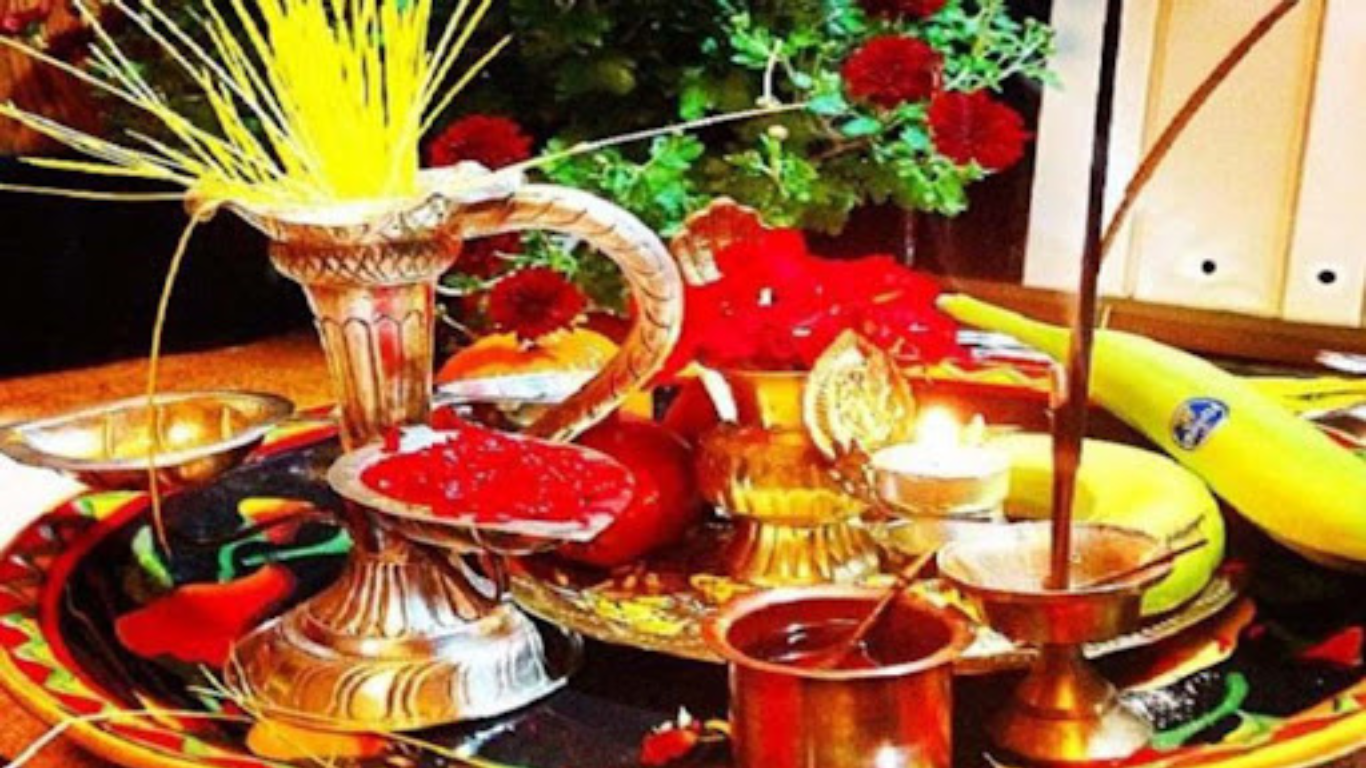
Tika and Jamara: The Intrinsic Rituals of Dashain
One of the most important aspects of Dashain is the tika and jamara ritual, which falls on the tenth day of the festival, Vijaya Dashami. This is the day when the younger ones receive tika-a red mark made of rice, yogurt, and vermilion-onto their foreheads by their elders. Along with tika, jamara-which is a yellow sacred grass grown during Dashain-is put behind the ear. These blessings are believed to be propitiations in nature and an assurance of protection, health, and success throughout the coming year.
Celebrating Dashain in Nepal means being at the forefront to receive all these blessings. The families are united together, sometimes coming from very faraway places to see their family elders. And as each one of them gets tika, they get warm blessings and best wishes, too. People also visit their relatives and neighbors in some areas so that no one is bereft of this blessing in this joyous period.
Traditional Nepali Attire: The Cultural Display of Dashain
During Dashain in Nepal, people are found in their traditional attire. Men wear Daura Suruwal, which is the traditional Nepalese national dress worn since centuries, and women dress up in beautiful traditional Nepali Gunyo Cholo. Wearing these clothes connects them to their heritage and enhances the festive spirit as family members look the best while gathering for the tika ceremony and festive meal.
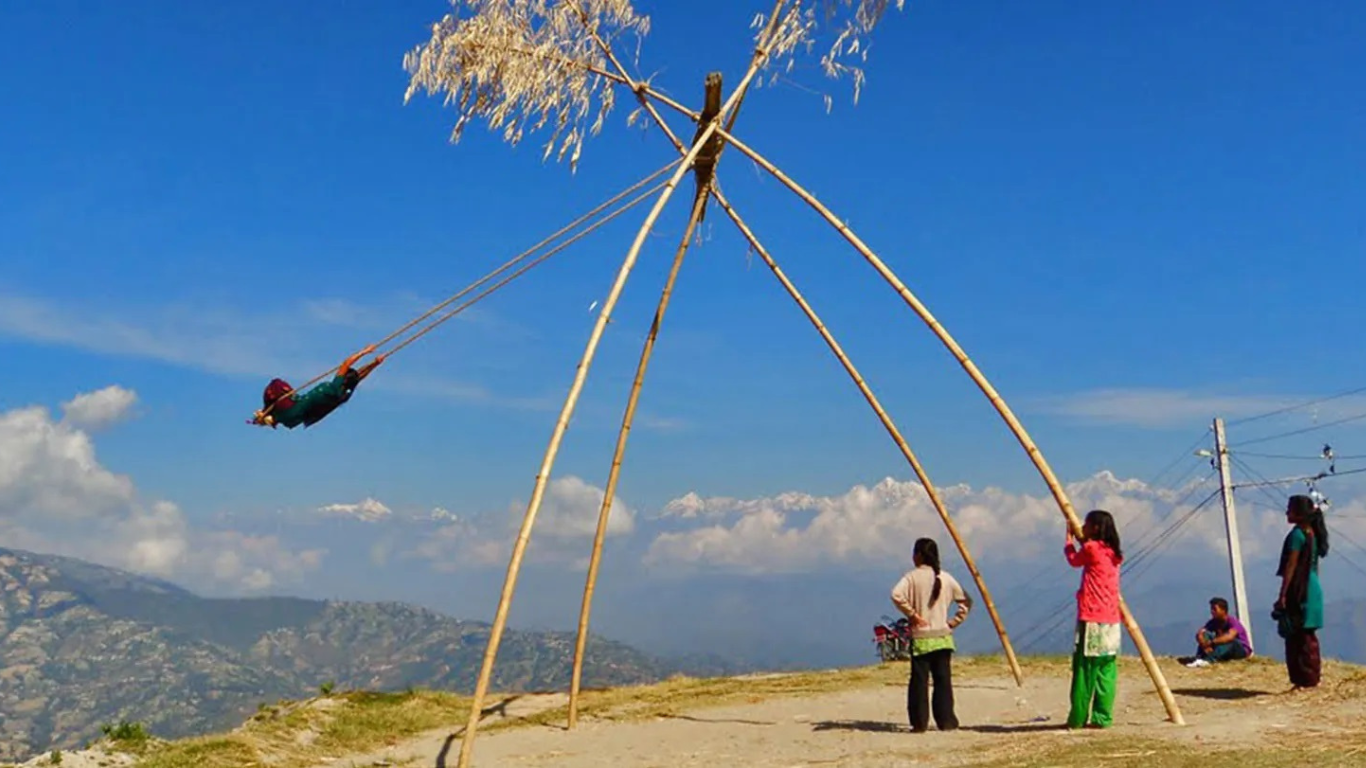
Enjoy Dashain in Nepal: Entertainment and Food
The feasts prepared during Dashain are nothing short of spectacular. Dashain is the time of affluence, and food is an intrinsic part of Dashain celebration. Traditional dishes such as khasi ko masu or goat meat, sel roti-a ring-shaped rice bread, alu tama-a potato and bamboo shoot curry, and a variety of pickles and sweets fill up the tables in Nepali households. These meals are shared among family members as they gather to celebrate their bond and the spirit of the festival.
Most of the time, preparation of food is done as a collective endeavor: in many homes, the young help in the kitchens with their mothers, learning traditions of recipes passed down through generations. In the case of Dashain, food does not just symbolize nutrition; it epitomizes the pleasure of giving and sharing in celebration of coming together.
Dashain Swings and Kite Flying: The Fun Side of the Festival
While Dashain is deeply spiritual and symbolic, it is also a time of fun and celebration. Traditional bamboo swings, called “ping,” are erected in villages and towns all over Nepal. These are not reserved for children; adults join in the merriment, too, believing that swinging during Dashain releases one from the burden of committed sins in the past. Playing on these swings constitutes a cherished memory among many Nepalis, especially those who grew up in rural areas.
Another amusing and smooth activity associated with Dashain is flying kites. During the days of festivity, the sky is dotted with colorfully engineered kites, while friendly competitions go on among children. Kite-flying symbolizes both freedom and joy, bringing a playful mood into the otherwise ritualistic festival.
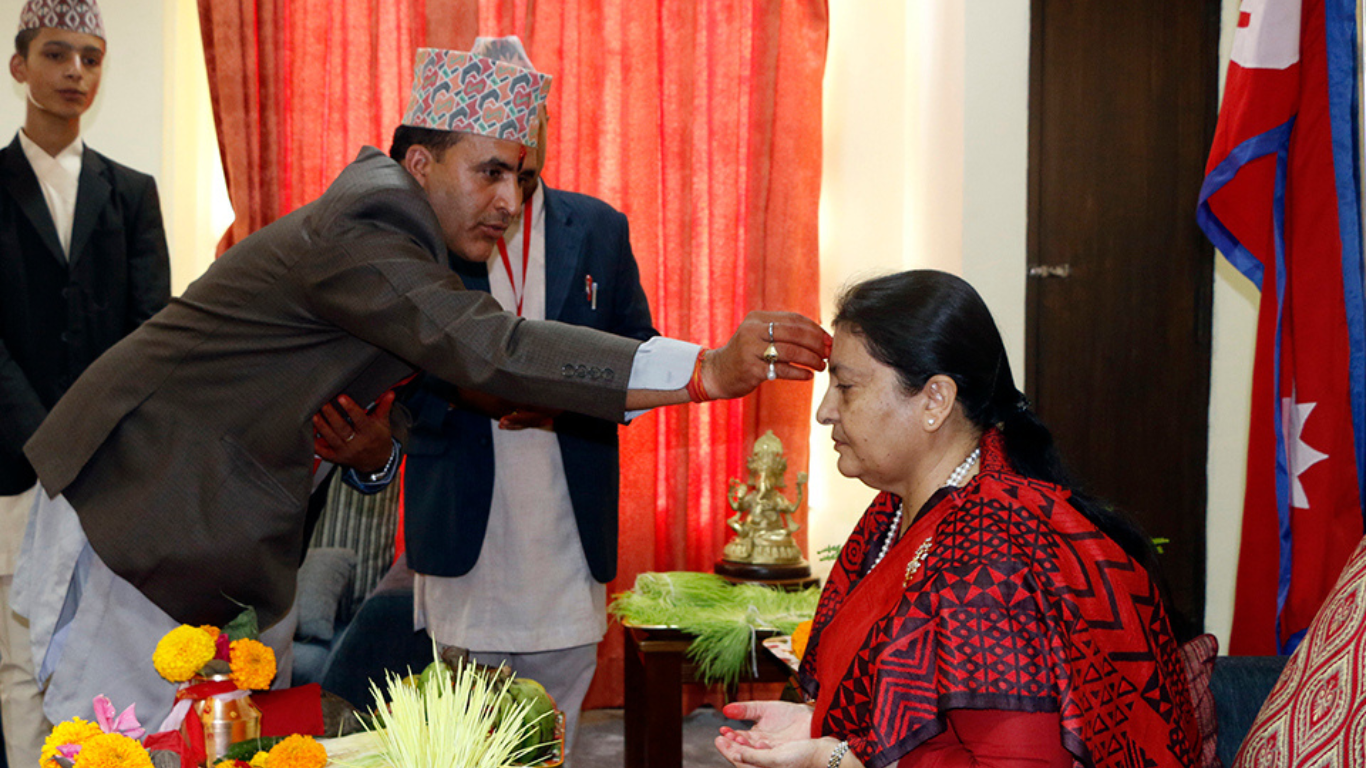
Dashain in Nepal: A Voyage to the Heart of Nepali Culture
To the tourists, Dashain is the time when life in Nepal comes into the spotlight. The decoration lining up the streets and temples buzzing with people offering prayers and sacrifices make a sight to amaze anyone. If you are in Nepal during Dashain, you experience something special: the cooperation of tradition, religion, and modern life together.
During Dashain, one can experience public celebrations in Kathmandu, Pokhara, and Chitwan, for example, which are full of traditional music and dances. Visits to rural areas during Dashain mean small, intimate family celebrations, complete with tika ceremonies and feasts. Visits to temples, such as the Dakshinkali Temple, will give insight into the spiritual aspect of this festival, which becomes highly active during Dashain.
How Dashain Strengthens Family Bonds
Basically, Dashain is a family festival. In a world where people are ever so removed because of lifestyles, Dashain manages to bring them together as families and lets them reunite with their loved ones. Of particular significance are the tika and jamara rituals in bringing together such bonds of love and respect from younger family members seeking elders’ blessings.
This is the strong familial bonding one finds in each household in Dashain-celebrating Nepal, and tika-receiving symbolizes love and care to be received from parents and elders to the children. That no matter wherever life takes one, family remains the central pillar of support.
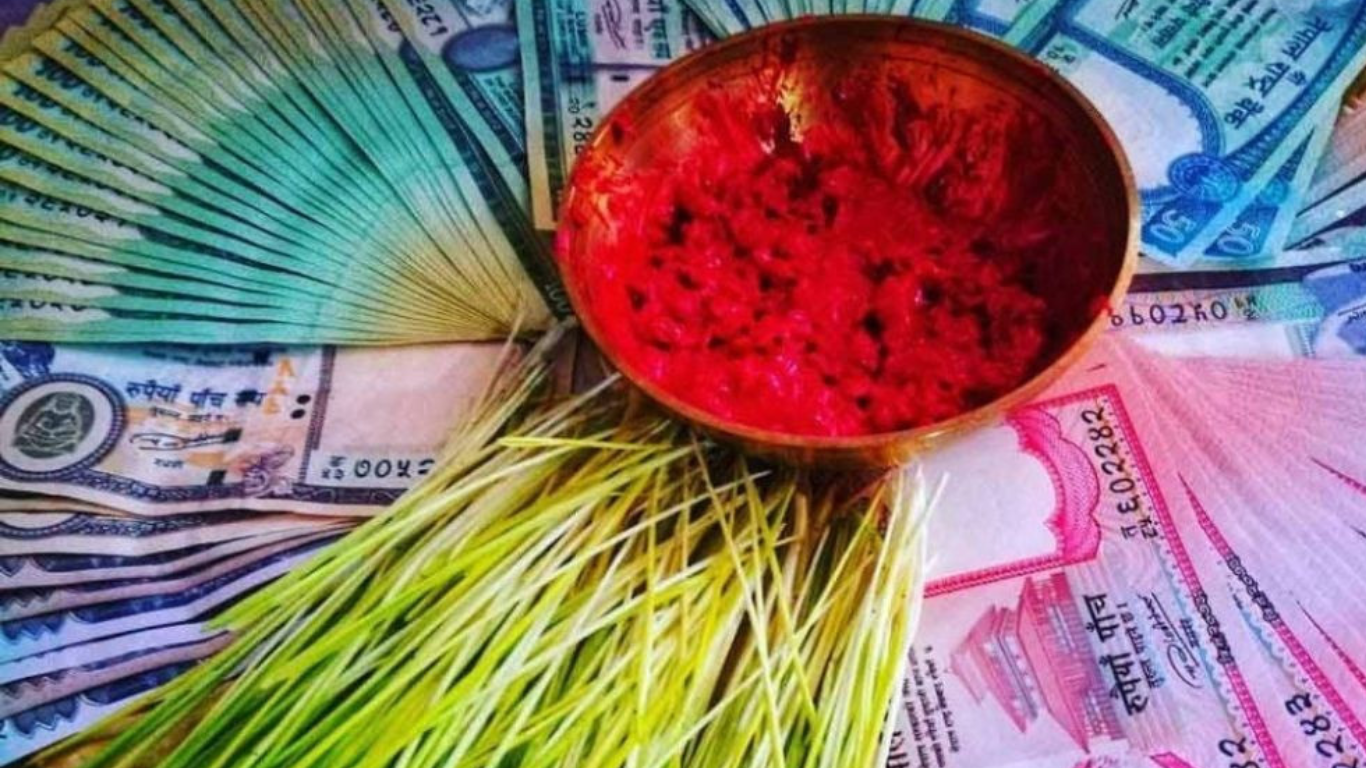
Dashain in Nepal: Enjoy Celebrating with Rich Traditions
Dashain is the most widely celebrated festival in Nepal, where rich cultural and religious traditions are received. The festival not only gives respect to Goddess Durga but also brings together family members to teach respect, love, and unity. Receiving tika and jamara to feasting on traditional cuisine, Dashain is one occasion to celebrate life, prosperity, and victory over bad times.
Be it a local or a visitor, Dashain offers a peek into the very core of Nepalese culture. Join the rituals, participate in festivities, or simply be a part of the joy around you-you’ll return with valued insight into customs that make Nepal what it is: a land of friendliness and tradition.
